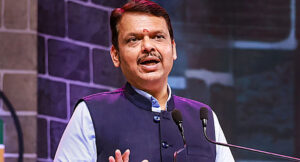As part of the ongoing Belgian economic mission to India, a seminar titled “Innovation for a Healthier World: Uniting Strengths from India and Belgium” took place on March 5, 2025, at the Veermata Jijabai Botanical Udyan and Zoo in Mumbai.
The event brought together leaders, researchers, and key stakeholders in the life sciences sector to explore how Belgian expertise and Indian pragmatism are converging to address global healthcare challenges.
Belgium, particularly its Wallonia region, has long been a European hub for vaccine and biotherapeutics development, hosting leading biopharmaceutical companies, biotech startups, and research institutions.
India, known as the “pharmacy of the world,” produces over 60% of the world’s vaccines and meets 20% of the global demand for generic medicines.
With such complementary strengths, collaborations between the two nations can potentially drive impactful, globally scalable healthcare solutions.
Strengthening Belgium–India partnerships in life sciences
The seminar showcased several groundbreaking Belgium–India partnerships that are transforming healthcare innovation.
GSK Belgium, a leader in vaccine development, has established strong partnerships with Indian companies like Bharat Biotech and Biological E. to enhance vaccine accessibility globally. These collaborations ensure a more resilient supply chain and long-term vaccine availability.
Belgian biotech pioneers Univercells and Quantoom Biosciences have joined forces with the Serum Institute of India (SII) to accelerate the production of mRNA-based cancer therapies.
This partnership is focused on reducing costs and production timelines and making advanced cancer treatments more accessible to diverse populations.
Another key collaboration involves Sagitta Bioconcept, which has teamed up with an Indian partner to develop novel vaccines using a viral vector platform based on a deactivated measles virus.
This joint research effort showcases how expertise from both nations can drive transformative discoveries in vaccine technology.
Bio Sourcing, backed by the European Innovation Council Accelerator, is working with Indian companies to reduce the production costs of monoclonal antibodies, a critical component in modern biotherapeutics.
By making these treatments more affordable and widely available, the partnership aims to enhance global healthcare accessibility.
Based in Wallonia, the diagnostic technology firm Synabs currently produces 80% of India’s sickle cell disease detection kits and is expanding its expertise to thalassemia detection.
With growing interest from organizations such as the Bill & Melinda Gates Foundation, this initiative could extend its benefits beyond India to African markets where these diseases are prevalent.
In nuclear medicine, the Oncidium Foundation has partnered with the Sri Venkateswara Institute of Medical Sciences (SVIMS) in Tirupati, Andhra Pradesh, to support radioligand therapy for underserved cancer patients.
The foundation aims to democratize access to innovative cancer treatments worldwide by leveraging advanced nuclear medicine therapies.
Bridging Global Health Challenges Through Innovation
From proton therapy and vaccine development to cancer treatments and ophthalmic implants, India–Belgium collaborations are paving the way for groundbreaking healthcare advancements.
The seminar emphasized how Wallonia’s expertise in research and manufacturing—combined with India’s expansive market reach—can lead to the creation of sustainable and scalable global health solutions.
Recent Belgian investments in India underscore the growing importance of this alliance. Quantoom Biosciences has announced plans to set up a new facility for mRNA vaccine production, further strengthening India’s role in vaccine manufacturing.
Additionally, IBA, a Belgian company specializing in proton therapy, is supplying proton therapy units for cancer treatment, enhancing India’s capacity to provide advanced oncology care. Digital Health News









